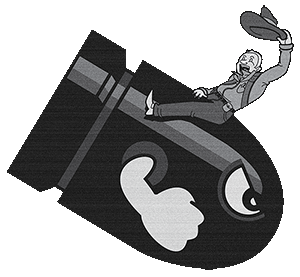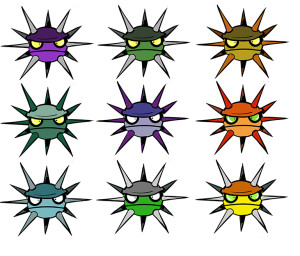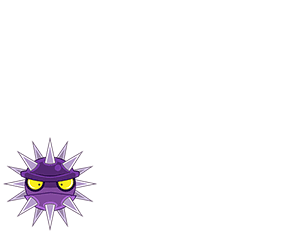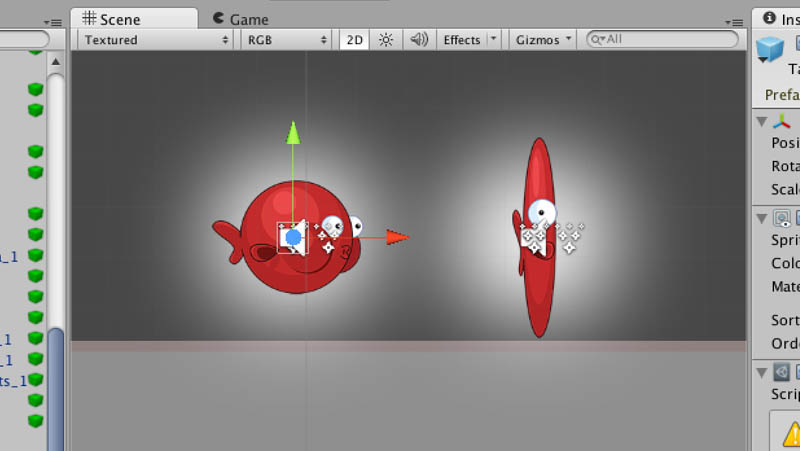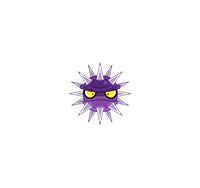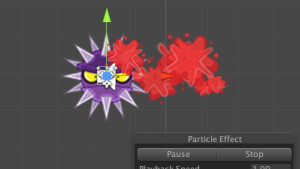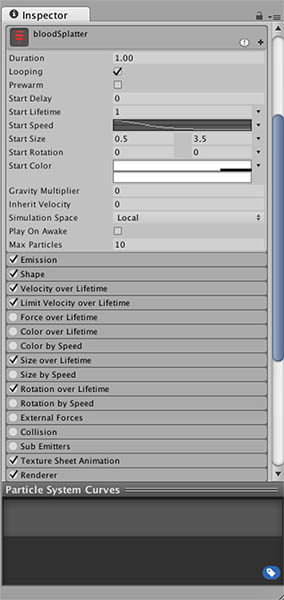SkyTyrannosaur
joined
We make games and tools to help you make games! Our latest tool is called Rex Engine, available on the Unity Asset Store. It's a 2D platformer engine modeled after the classics!
(or: How I Learned to Stop Worrying and Love the Explosions)
You might have recalled me mentioning in an earlier post that we went to the Game Developers Conference (GDC) in San Francisco last year. It was quite a milestone for us as it was the first time we were representing our company at a big games convention -- we had gone to Appsworld a month earlier but that was much smaller and quite lacklustre by comparison, though it was free to participate and we got a feature on Blowfish Meets Meteor (a brick-breaker for iPhone and iPad) on Alhurra Tech, an Arabic-language tech news channel. It was also the first time I had been to San Francisco and met Muir, as bizarre as that might seem considering at that point we had already been working together for almost three years (this is somewhat more understandable if you consider the fact that I'm normally based in Bristol, England, which is a bit more than a stone's throw away).At GDC we were promoting BMM as it had just been launched, and a lot of people mentioned that they were drawn to our booth because of the game's art (and perhaps also its over-the-top trailer that was put together by our friend Kevin from Vsauce2). I spoke with several other game artists who were intrigued about my work process and they were quite surprised when I said I was simply working with Photoshop and Illustrator, so I thought an interesting topic for today's post would be to go into more detail about that.
We start a new game with a design document that serves as a general overview covering the premise and descriptions of the characters, worlds, accessories and power-ups, music, etc. We share it as a Google Doc which we can edit together whenever we come up with ideas or refine existing ones. In it Muir provides a brief description of what he has in mind. These can be quite simplistic, such as for the sea urchin character that features as the most basic enemy (the Goomba, essentially) in Blowfish Burst (which I'll be using as the example here), for which the description reads thus: "A spherical sea urchin covered in spines. It moves horizontally or vertically, popping any player foolish enough to come in contact with it." The spiky sea urchin pervades the game from the very beginning because it's antithetical to the blowfish protagonist, which is portrayed as little more than a goofy-looking balloon with fins. If the blowfish touches the sea urchin, it pops.With that in mind I start with the concept sketch stage. I find a particularly good program for this is PaintTool Sai, a fairly obscure Japanese painting software (although it's unfortunately not available for Mac, just Windows, at least as far as I'm aware). I like it because it's fast and simple with an intuitive interface and a very handy tool that steadies your brushstroke if you want smoother lines, but it lacks some basic features that can at times be frustrating, such as the fact that there's no easy way to make circular/elliptical shapes or selections (fortunately it saves files as PSD so you can transition quickly between it and Photoshop, the latter of which is renowned for its (over)abundance of tools but I still find it to be an awkward program for actual drawing).
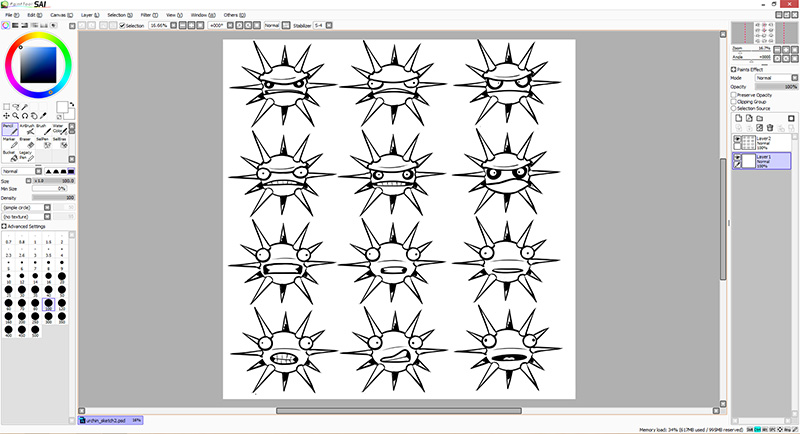
Once we arrive at the right design I'll do some colour briefs. At this point if we have any background art for the game it's wise to lay the sketches over them to see how well the characters will stand out from their environments (which is important to bear in mind especially for an enemy that will kill you instantly upon contact). In this case we found that a strong purple grabbed the eye the most and was not a dominant colour in any other enemy, which would help it to stand apart.
I'll then import the sketch in Illustrator, dim it to about 30% opacity, and draw it up as vector shapes. I find working with vectors useful not only for the obvious reason that I can scale it up without losing image quality, but also because they're easily editable. They are, however, fairly counterintuitive for a beginner and it's a steep learning curve before you reach a stage where you're comfortable with them. I can look back and remember how many frustrating problems I encountered while designing the humpback whale boss in BMM (the first character I had ever created in this manner), which could have been avoided had I been aware of features like being able to draw shapes inside other shapes (extremely useful for contour shadows and highlights) and the Pathfinder tool which gives you a lot more versatility in the shapes you're able to create quickly (through intersections with other shapes, for instance). Back then even drawing up vector shapes with a sketch as reference could be a chore, but now I'm confident enough to be able to draw in Illustrator from scratch.
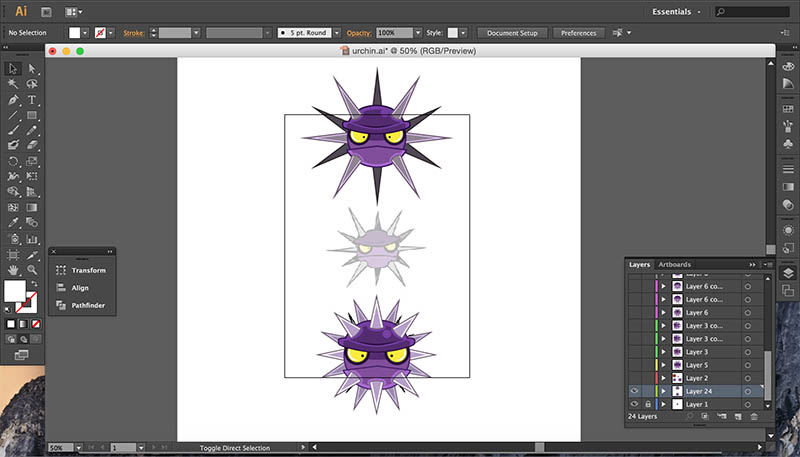
Many of you might think, "That's all well and good now, but why did you decide to start working with Illustrator at all instead of something you were already much more familiar with?" After all, I was working on animations and Illustrator isn't particularly known as an animation program. My reasoning had to do with the very first design sketches for Blowfish Meets Meteor, which weren't drawn up by me but rather another artist, Jared Repchull, whom Muir and I knew from the game design message board we used to frequent, and had been recruited to work on concept art for the game before I joined the team. Jared's unique, recognisable style involved a lot of very thick line-work and basic geometrical shapes (particularly its enormous, chibi-style, rounded heads), which was well-suited for the small screen on the iPhone as characters would be easily identifiable even at such small scales.
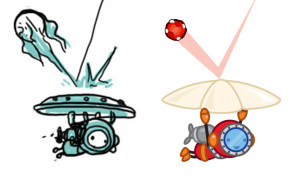
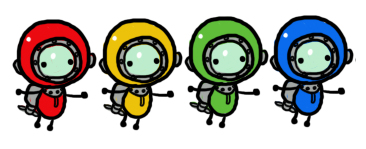
As that had been established as the style for the game's characters, it seemed to me a natural conclusion to work with vectors despite my early frustrations with them. That said, there is a trap that one can easily fall victim to if they take this approach, which you can often see with animations created with programs such as Flash, and that has to do with flatness. After having designed your character as a set of overlaying shapes, there's this temptation to animate it solely by repositioning and rotating these constituent shapes (its limbs and head, for instance) without actually drawing anything again throughout the sequence. This might save you a lot of time, but the result is that your characters will look like they're little more than stiffly animated cardboard cut-outs. Assuming you're not animating this way intentionally (you might want to be if you're working on a South Park game, or a long-awaited sequel to Parappa the Rapper), then it's important to give your characters a bit of depth as they move. Even just a little of it can make a huge difference. In the case of the sea urchin, whose movement is confined to up-and-down or left-and-right, animating it so it turns towards and away from the viewer can help to bring it to life, despite the limitations of its limbless design.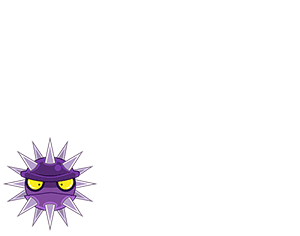
Above you'll notice the sea urchin above simply moving along the screen with no inherent animation to its sprite, but below you'll see that giving it even just a subtle turn as it moves can help to give the character some depth. This of course means more careful work with editing existing shapes, repositioning them relative to each other, and drawing up new shapes, but the end result pays off because it makes your characters feel less flat, and it's important to bear that in mind even if the character and its animation are very simple.When working on the animations for BMM, as I created frames in Illustrator I'd often need to transition between it and Photoshop, since it's always useful when tweaking an animation to actually be able to see it in action. This was probably the main issue I had with this approach since it required an extra step, seeing as Illustrator doesn't have an animator built into it. Now that we work with Unity for Blowfish Burst, this poses less of a problem because I ultimately skip the step where I animate in Photoshop and directly animate the sprites in Unity. In this case Photoshop is used only to convert the frames en masse into individual PNG files through an extremely handy script (and sometimes to add subtle effects like glows or lighten individual frames, because in Unity's sprite renderer you're only able to darken colours rather than lighten them).
In Unity I animate the sprite simply by dragging the frames' files into the animator's timeline. Here I'm also able to employ standard animation techniques like squash-and-stretch and bounce through the use of the Scale, Position, and Rotate parameters. In addition, through the use of its animation curves I can ease in and out of movements to create the effect of momentum (for instance if a character rotates the speed of the rotation would start off slowly, then accelerate, and slow down again as it ends, to make it look more natural). In a sense this means that once an animation's frames have been created it's only half-complete, because there's so much more that can be done through Unity's animator to give the animation more exaggeration and flair. This is particularly useful for characters like the blowfish, whose balloon-like nature allows for a goofily enormous amount of squashing and stretching. For example, in the picture below I show one of the frames for when the blowfish slams into a wall. While a fair amount of that squash and stretch needed to be designed in the frame itself, playing around with Unity's Scale parameter allows me to exaggerate it even further.
Particle effects are another extremely useful feature in Unity. As I've mentioned many a time, in my line of work it seems almost as inevitable as the heat death of the universe that after having designed a character I'll eventually animate it exploding. This means animating a lot of pieces flying out in all directions. In BMM I had the misfortune of having to do this the hard way: animating each individual piece as it flies outward from a central point and scales downward until it eventually disappears. Not only was this burdensome in terms of how much time it'd take, but it meant that the frames would end up expanding to very large sizes to account for the outward movement of all the blood, guts, and debris. Larger images beget greater demands on a device's memory, so in the interest of optimisation they ought to be avoided whenever necessary. And in the case of all these exploding characters it felt like quite a waste of space considering there was an ever-expanding amount of empty space in between the pieces flying in all directions that had to be baked into the image. In the case of BMM this put a restraint on the intensity of the explosions because we couldn't afford to have the debris fly out too far if we wanted the game to run smoothly, but using particle effects in Unity avoids this issue entirely.
The beauty of the particle effect tool is that it'll take an image (for example, an individual piece of debris) and let you adjust the direction in which it moves, as well as its speed, sizing, rotation, and a whole manner of other variables. This means you can have tens (or even hundreds) of these particles flying across the entire screen in all directions with very little burden on memory, as it's ultimately employing very tiny images. In the image above you can see a blood splatter effect applied to the urchin, which I could potentially have spraying out as far as I want (suddenly I'm having flashbacks of playing Vandal Hearts). Moreover, if you know how to create a sprite sheet (where several sprites are placed in a single image and spaced evenly apart so the program can read them as frames of an animation) then you're able to have each piece of debris animate as well. This has basically let us go crazy with special effects, which can be dangerously addictive seeing as you still don't want there to be too much action happening on-screen that might distract from the content you should be focusing on (case in point: the average Hollywood blockbuster).Animating can be tedious, but the joy you feel as you witness your creation come to life more than compensates for that. I originally majored in animation because ever since I was a child I was fascinated by the process of it (almost to a fault considering I spent so much of my time in primary and secondary school drawing flipbooks of increasing complexity instead of actually paying attention in class), but I entered into it at a time when 2D animation was dying out in favour of 3D and I felt increasingly out of touch with that. When I discovered that many of my fellow animation majors lacked even basic traditional drawing skills I realised it was time to flee from a sinking ship and I reoriented towards illustration. Given that, it's certainly by some stroke of serendipity that I forayed into the games industry and my love for animation was rekindled. After all, those characters aren't going to explode themselves.
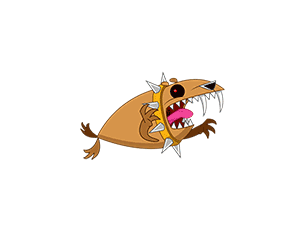
- Ian
(If you want to be kept abreast of our shenanigans be sure to follow us on Facebook and Twitter!)
What's in a Brick-Breaker?
Blowfish Meets Meteor is a brick-breaker.A year ago, when we launched on Apple's iPhone and iPad, we were met with a lot of glowing reviews -- and a fair bit of confusion. Amidst all the talk of the beautiful animation and the goofy sense of humor, there were an alarming number of reviews that threw around phrases like "typical" or "unremarkable." A lot of people seemed to think it was a perfectly serviceable brick-breaker, and they stopped there.In hindsight, it's hard to blame that assessment, because Blowfish Meets Meteor actively goes out of its way to pretend to be a normal brick-breaker for its first several levels. This was part of the subversion we based the game's design on. It's got all the classic brick-breaker trappings: a ball (in the form of a meteor), a paddle (in the form of an undersea diver), and a boatload of bricks to smash with them.
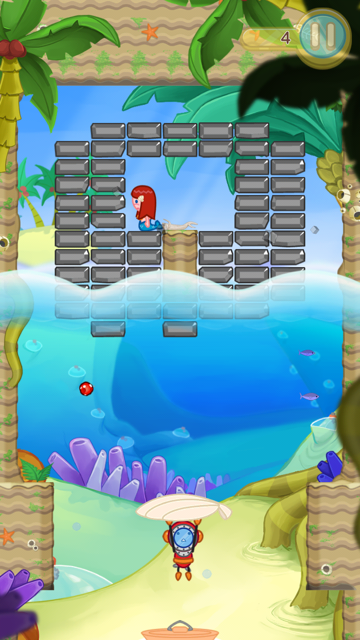
The first level reinforces this: you're mostly using the meteor to destroy blocks. It's a chance to learn the basic controls and to get a feel for the game. The level has no real defining features, and nothing that's unique to the genre, except for a single tiny mermaid endlessly wandering back-and-forth inside a pocket of bricks. When the player destroys the bricks trapping her, she'll wander further out, and when they've destroyed enough bricks that she can fall to the bottom of the screen, she'll do so. This triggers the end of the level and a confetti-covered victory celebration while your diver, his mermaid wife, and the mermaid daughter that was just rescued jump up and down with glee.This was our first subtle hint that Blowfish Meets Meteor was built to subvert genre tropes.The next few levels play off of the mermaid theme: Level 2 gives you two mermaids to rescue before the level is won, and Level 3 gives you a powerup. So far, so typical -- until Level 4, when the giant piranha shows up.
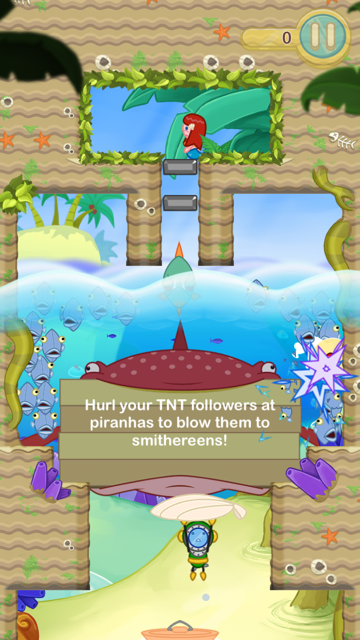
This giant piranha sits idly in the middle of the screen, breathing heavily, sweating, and generally taking up a lot of space. He's positioned smack-dab in the mermaid's way, and if the player tries to rescue her before destroying him, he immediately gobbles her up on contact; the level ends with your characters sobbing uncontrollably as the mermaid daughter slides down the enemy's throat.It's clear that you have to take out the piranha before you can win, but smashing it with the meteor does nothing. This is the first time where the puzzle element comes into play, and Blowfish Meets Meteor starts genre-hopping. A couple levels previous, players were taught about a special TNT move, where destroying several bricks in rapid succession would grant them a sentient stick of TNT. By tapping the screen, players can hurl this TNT anywhere they please, destroying everything in its path on contact. At its core, this mechanic is a get-out-of-jail-free card; nothing in the brick-breaker genre is more annoying than that point near the end of a level where only a few bricks are left, and you have to aim the ball at an incredibly precise angle to hit them. TNT sidesteps that problem by letting players destroy any brick they want simply by tapping on it.In this level, however, it serves an alternate purpose: it's the only way to destroy the piranha. To a player who's been paying attention, this is probably obvious, so there's one more wrinkle: the level doesn't have enough bricks in it to earn a TNT charge. Instead, the level is populated with several schools of tiny fish, who don't reflect the ball on impact but who do count towards a TNT-giving combo. By the time the player has cleared out the fish, earned themselves a stick of TNT, and used the TNT to kill the piranha, they've learned several important lessons:
- Mermaids can be killed, and the game ends if they do
- Killing piranhas often takes priority over breaking bricks
- TNT charges have puzzle-solving and combat applications outside of the core brick-breaking gameplay
- TNT charges can be earned in a variety of ways

The game gets more puzzle-y from there. The next level initially appears to have no mermaids at all -- until the player happens upon a giant stack of dynamite, which explodes the terrain surrounding the screen, causing the camera to zoom-out and reveal the hidden second half of the stage. A few levels after that, and players are introduced to falling stalactites, which trigger when hit with the ball and will destroy enemies or mermaids. As the game progresses, it starts to include things like:
- Mermaid-killing spike corridors where players can flip the spikes by hitting them with TNT
- Boss battles that play out like Zelda-style boss puzzles, arcade shooters, or even matches of Pong
- Levels where there's no ball at all, and players are given an infinite string of TNT to carve a safe passage for the mermaids
- Metroid-inspired segments where players are left to find hidden secrets buried in level geometry
And so on, and so on. One of our biggest goals with Blowfish Meets Meteor was to never repeat a level design. There are plenty of levels that still focus on brick-breaking, and those often get their own special mechanics, as well, like a series of late-game levels that include paddles on both the top and bottom of the level, or levels where there are no walls, and the ball wraps around the left and right edges of the screen. The end result was a game with 60 levels, all of which had a completely different hook.In the end, Blowfish Meets Meteor is a brick-breaker, but it's also a puzzle game. When it feels like it, it brings in elements of platformers, shooters, and adventure games. In a nutshell, it takes inspiration from everywhere. We wanted to make a brick-breaker that took the genre in new and exciting directions, and, a year later, I'm still incredibly happy with the result.
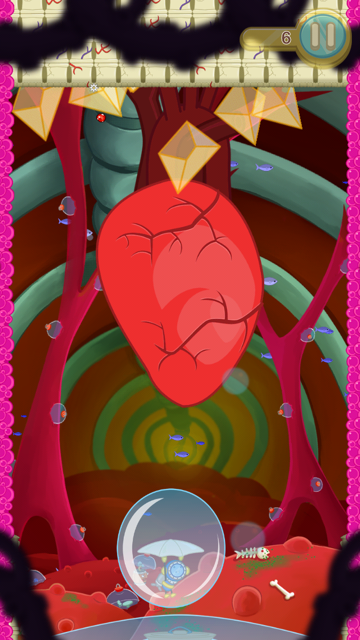
Brick-Breaker Marketing
In a way, I think we tried to be too clever. I still love the idea of a game subverting expectations, surprising players, and slowly unfolding into something much different from what it initially presents itself as. At the time, though, I don't think I understood the mobile game marketplace well enough to pull this off properly.In truth, we probably could have gotten away with this with Blowfish Meets Meteor if we had simply marketed it as a brick-breaker first and foremost. In our haste to demonstrate how much more was on offer, but also to not give too much away, we muddled the message: sometimes, it was a brick-breaker, sometimes, an action game, sometimes, a puzzle game. In practice, this meant that the game didn't get a very hard push in any one direction. Our App Store rankings revealed that it showed up in puzzle searches far more often than it did in brick-breaker-related ones. At present, Blowfish Meets Meteor shows up at number 67 in an App Store search for "brick breaker" -- far beyond the point where most people will stop browsing.So we never quite hooked the brick-breaker audience. I suspect we also didn't quite hook the action or puzzle audiences: most of the "typical brick-breaker" reviews suggest players that bought the game expecting something that immediately identified as one genre or the other.
The Lesson
Subversive game design certainly has its place. I still think it's clever. I think it's fun. I think it rewards players who take the time to look beyond the thirty-second hook.If I were to do it all over again, though, I'd leave it out of my marketing.With any successful marketing campaign, there's a singular core: what is this product I'm selling, and who am I selling it to? Having had a year to digest it, I think Blowfish Meets Meteor is, first and foremost, a brick-breaker, and it should've been marketed as such. The action elements, the puzzle elements, and the subversion have their place, but it's hard to hang your hat on "my product goes above and beyond" as a marketing message, because everyone is trying to do that, and people are used to tuning it out. Find the core, and target them with everything you've got.(Follow us on Facebook and Twitter and for more amazing insights into game design and game marketing!)
